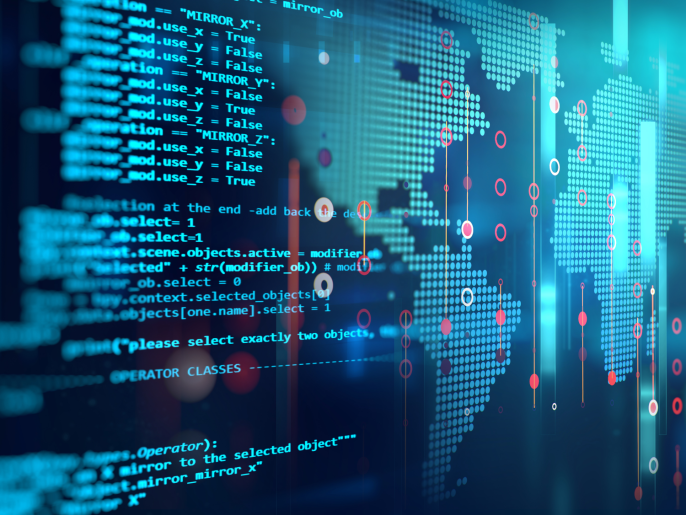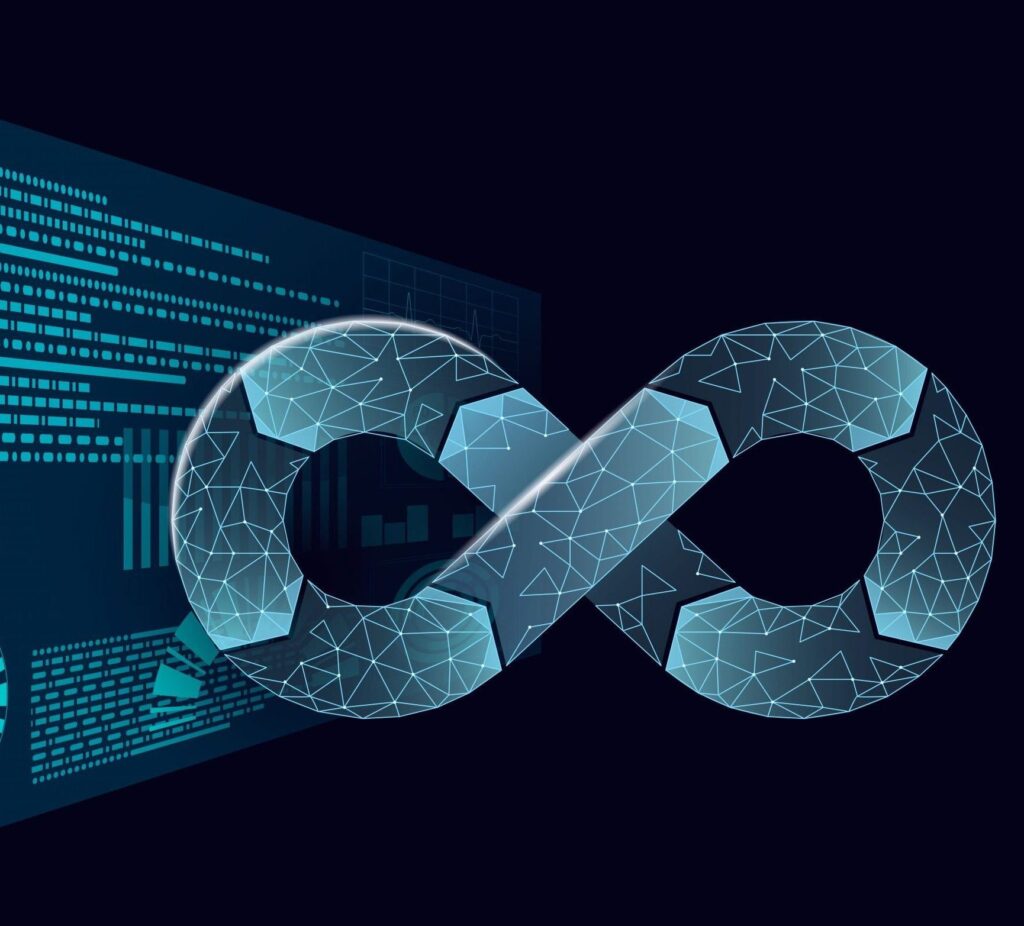
DevSecOps: A Comprehensive Guide to Securing the Modern Software Development Pipeline
1. Introduction
- What is DevSecOps?
- Overview of how software development has evolved from DevOps to DevSecOps.
- The need for integrating security practices into the development process.
- Importance of security in today’s fast-paced development cycles where agility is paramount.
- The Shift from DevOps to DevSecOps
- Brief explanation of how DevOps focuses on collaboration between development and operations teams.
- Introduce the idea that security, once treated as an afterthought, must now be embedded at every stage of the software lifecycle.
- DevSecOps, which is short for development, security and operations, is an application development practice that automates the integration of security and security practices at every phase of the software development lifecycle, from initial design through integration, testing, delivery and deployment.

- The Growing Threat Landscape
- Discuss the increasing sophistication of cyber threats and their impact on organizations worldwide.
- How agile development and continuous delivery models increase the risk exposure for organizations that don’t prioritize security.
- Benefits of DevSecOps
- Security at the Speed of DevOps: Security teams often struggle to keep up with the speed of modern development cycles. DevSecOps integrates security into workflows so it doesn’t hinder speed.
- Shift Left Approach: Moving security to the left of the SDLC (Software Development Lifecycle), addressing vulnerabilities earlier, which is more cost-effective than doing so in production.
- Automation and Scalability: Automating security practices allows organizations to scale effectively while maintaining compliance and reducing manual interventions.
- Reduced Costs: Discuss studies and reports that show fixing bugs or vulnerabilities early in the cycle is far less expensive than dealing with them in production or post-release.
3. Core Principles of DevSecOps
- Security as Code:
- Emphasize the importance of treating security policies and configurations in the same way as infrastructure or application code.
- How version control systems (e.g., Git) and automation tools ensure that security controls evolve alongside application changes.
- Collaboration Between Teams:
- The necessity of fostering collaboration between development, security, and operations teams. Eliminate silos to ensure that everyone has a shared responsibility for security.
- Automation of Security Checks:
- How security automation is key to scaling DevSecOps practices. Examples include automated static code analysis, dynamic application testing, and vulnerability scanning.
- Explain how tools such as Jenkins, GitLab, and others can be used to automate security steps within CI/CD pipelines.
- Continuous Monitoring:
- Real-time monitoring of applications in production for potential security incidents.
- Introduction of technologies like Runtime Application Self-Protection (RASP) and Security Information and Event Management (SIEM).
- Threat Modeling and Risk Assessment:
- The role of threat modeling in identifying potential vulnerabilities during the design phase.
- Tools like STRIDE and DREAD to assess and prioritize risks within DevSecOps.
- Microservices and Container Security:
- Discuss how DevSecOps fits into cloud-native development.
- Importance of securing containers, Kubernetes clusters, and serverless applications.
4. Implementing DevSecOps: Best Practices

- Cultural Transformation:
- How to foster a culture of security in teams that have traditionally focused only on development or operations.
- Steps to ensure the organization embraces shared responsibility for security (training, leadership buy-in).
- Security in the CI/CD Pipeline:
- Discuss integrating security into continuous integration (CI) and continuous delivery (CD) pipelines.
- Tools such as SAST (Static Application Security Testing), DAST (Dynamic Application Security Testing), and IAST (Interactive Application Security Testing).
- Example: Integrating OWASP Dependency-Check, a tool that checks for vulnerabilities in third-party libraries, into Jenkins CI.
- Secure Coding Practices:
- Training developers to write secure code and understand common security vulnerabilities, such as those listed in the OWASP Top 10 (e.g., injection flaws, cross-site scripting).
- Regular code reviews and the importance of peer feedback to maintain high-security standards.
- Automated Security Testing:
- Tools like Checkmarx, SonarQube, and Veracode for static code analysis.
- Automated penetration testing tools that can be integrated into the CI/CD pipeline.
- Infrastructure as Code (IaC) Security:
- Best practices for securing infrastructure as code.
- Tools like Terraform, AWS CloudFormation, and how their configurations can be scanned for vulnerabilities (e.g., using tools like Checkov or Terrascan).
- Container Security and Orchestration:
- Securing containers through image scanning, runtime security, and enforcing policies at the orchestration layer (e.g., Kubernetes).
- Tools like Aqua Security, StackRox, and Twistlock for container and Kubernetes security.
- Vulnerability Management:
- How continuous scanning tools can find and mitigate vulnerabilities in code, infrastructure, and third-party libraries.
- Role of patch management and ensuring timely updates to address identified vulnerabilities.
- Incident Response and Forensics:
- Preparation for incident response is critical. Discuss how DevSecOps teams can respond to incidents in real-time, leveraging monitoring and logging.
- Forensic readiness, ensuring that teams can investigate and recover from breaches swiftly.
5. Tools for DevSecOps
- Code Security:
- Tools like SonarQube, Fortify, and Snyk for automated code reviews and vulnerability scanning.
- Infrastructure Security:
- HashiCorp Vault for managing secrets and sensitive data.
- Tools like TFlint and Sentinel for checking the security of Infrastructure as Code.
- CI/CD Security:
- Jenkins, GitLab CI, CircleCI for CI/CD with built-in security scans.
- Container security tools such as Docker Bench, Clair, and Anchore.
- Threat Detection and Monitoring:
- Tools like Splunk, ELK Stack, and AWS CloudWatch for real-time monitoring of security incidents.
- Runtime security tools like Sysdig Secure and Falco for container security.
6. Challenges and Barriers to DevSecOps Adoption
- Cultural Resistance:
- Discussion of the difficulty in transitioning teams from traditional DevOps to DevSecOps due to perceived trade-offs between speed and security.
- Skill Gaps:
- The challenge of upskilling developers to have security knowledge and security teams to understand the development process.
- Tooling Complexity:
- While automation helps, managing a myriad of tools in a DevSecOps environment can be overwhelming, particularly in large-scale deployments.
- Legacy Systems:
- Challenges in adopting DevSecOps in environments where legacy systems are still in use, as these systems often aren’t designed with modern security practices in mind.
7. Case Studies and Real-World Examples
- Netflix’s Shift to DevSecOps:
- Discuss Netflix’s approach to DevSecOps with their “Security Monkey” tool and how they integrate security into their highly scalable microservices architecture.
- Facebook’s Bug Bounty and Continuous Testing:
- How Facebook integrates security testing throughout the SDLC, leveraging internal tests and bug bounty programs to find vulnerabilities.
- Capital One and Cloud Security:
- Examine how Capital One implemented DevSecOps as they moved to the cloud and how they addressed both security and compliance.
8. Future of DevSecOps
### AI and Machine Learning in Security
In today’s rapidly evolving digital landscape, the integration of Artificial Intelligence (AI) and Machine Learning (ML) into security protocols has become a game-changer. These advanced technologies are revolutionizing the way organizations protect their sensitive data, identify threats, and respond to cyberattacks.
#### Understanding AI and Machine Learning
AI refers to the capability of a machine to imitate intelligent human behavior. It encompasses various subfields, including natural language processing, robotics, and computer vision. On the other hand, ML is a subset of AI that focuses on algorithms allowing computers to learn from and make predictions based on data. By analyzing vast amounts of information quickly and accurately, ML systems can uncover patterns that may indicate potential security threats.
#### Enhancing Threat Detection
One of the most significant advantages of incorporating AI and ML in security is enhanced threat detection. Traditional security systems often rely on predefined rules or signatures to identify malicious activity. However, cybercriminals continuously adapt their techniques to bypass these defenses. In contrast, AI-driven solutions can analyze real-time data streams from diverse sources—such as network traffic logs or user behavior analytics—to detect anomalies that suggest unauthorized access or breaches.
For example, an ML algorithm might learn typical user behavior within an organization over time; if it suddenly detects unusual login times or locations for a particular account, it can trigger alerts for further investigation.
#### Automating Responses
Another key benefit is automation in incident response. When a potential threat is detected by an AI system, immediate action can be taken without waiting for human intervention. This could involve isolating affected systems from the network or blocking suspicious IP addresses automatically while notifying IT personnel for further analysis.
This swift response mechanism significantly reduces response times during incidents where every second counts—minimizing damage caused by ongoing attacks such as ransomware deployments or data exfiltration attempts.
#### Predictive Analytics
AI and ML also excel at predictive analytics within cybersecurity frameworks. By mining historical data related to past incidents—alongside current trends—the technology helps organizations anticipate future attacks before they occur. For instance:
– **Risk assessment:** Organizations can better understand vulnerabilities across their infrastructure.
– **Threat intelligence:** Gathering insights about emerging threats allows companies to strengthen defenses proactively rather than reactively addressing issues after they arise.
#### User Behavior Analytics (UBA)
User Behavior Analytics leverages machine learning algorithms focused specifically on monitoring employee actions within corporate environments. This includes tracking logins/usage patterns across devices/applications etc., identifying deviations indicative of insider threats (whether intentional malice or inadvertent errors).
By establishing baselines based upon normal activities performed by employees regularly—UBAs enhance overall situational awareness while enabling rapid identification/remediation capabilities against any abnormal behavior flagged through continuous monitoring processes implemented via automated tools integrated into existing infrastructures seamlessly!
#### Challenges Ahead
Despite its immense potential benefits when applied correctly within cybersecurity measures today; several challenges accompany implementing these technologies effectively:
1. **Data Privacy Concerns**: Collecting large volumes of user data raises questions about privacy compliance with regulations like GDPR.
2. **False Positives**: Algorithms may misinterpret benign actions as threats leading to unnecessary alarms which could cause alert fatigue among teams responsible for investigating them manually afterward.
3 . **Evolving Threat Landscape**: Cybercriminals constantly develop new tactics requiring constant updates & training cycles ensuring models stay relevant over time adapting alongside ever-changing attack vectors targeting unsuspecting victims worldwide!
### Conclusion
The application of AI and Machine Learning in security offers unprecedented opportunities for enhancing protection against increasingly sophisticated cyber threats facing businesses today! As organizations continue embracing technological advancements—they must remain vigilant regarding ethical considerations surrounding implementation practices while leveraging available resources optimally ensuring effective defense mechanisms safeguarding vital assets long-term!
How AI is beginning to be used in DevSecOps for anomaly detection, automated threat response, and enhancing predictive security models.
Zero Trust and DevSecOps:
Discussion on the future of security policies like zero-trust architecture, which aligns well with the DevSecOps philosophy.
Serverless and Function as a Service (FaaS):
Explore the unique security challenges of serverless computing and how DevSecOps practices are evolving to cover these scenarios.
9. Conclusion
- Recap the importance of DevSecOps in modern software development.
- Final thoughts on how integrating security as part of the development pipeline is not just a best practice but an essential requirement to safeguard organizations in today’s threat landscape.

